Hi everyone! Welcome back to The Knowledge Pool!
Most commanders have an obvious theme and encourage us to play specific cards. This is apparent when we consider the decks I've presented so far. Mayael wants us to play with big creatures, Trostani wants us to make tokens, and Kydele wants to untap. I personally love building decks like these, because they aren't so narrow that they limit creativity, but they offer us a clear goal that we can build around.
I've always had trouble with more open-ended commanders for several reasons. I often find that a lack of direction causes me to drift towards a "good stuff" deck, and while there's nothing wrong with "good stuff", it tends to lack the synergies that makes Commander appealing to me. The realization that my deck is trying to accomplish too many disconnected goals is another manifestation of this lack of direction. The cards in our deck may synergize in some way with our commander, but they aren't working well enough with the other cards in the 99.
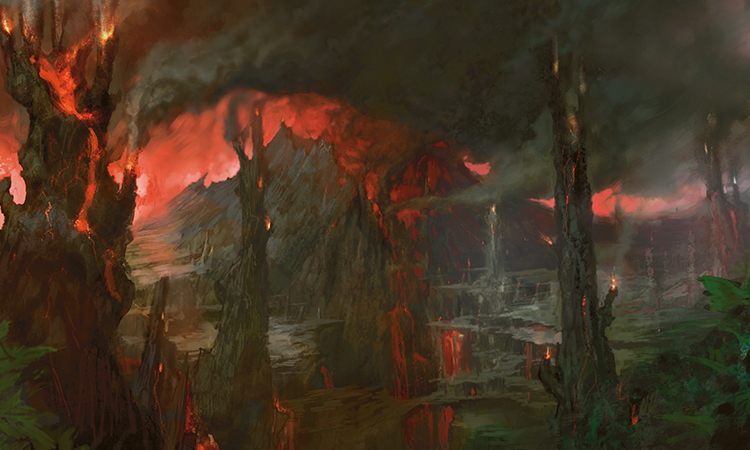
Another aspect of Commander that gives me fits is the Jund color combination. I've played Jund in Modern for years, and so I've become fond of the kinds of cards available in BRG. I've tried dozens of times to brew a Jund commander, but I've never been able to find enough inspiration to actually complete a deck. Of the decks I've brewed, I always seem to come back to Kresh the BloodbraidedKresh the Bloodbraided. Kresh does a bunch of things I like: he rewards us for saccing our creatures, for having really big creatures, for killing enemy's creatures, and he provides us the nifty opportunity to FlingFling damage into our opponents' faces. But, for me, Kresh has always been too open-ended. I've never been able to strike the right balance between all these things I love. Thus, Kresh has always languished away, brew after brew.
As the Kresh Turns
Before we get into how I made Kresh work, I feel compelled to give you a bit of backstory on what lead to this most recent design. If you've read any of my other articles, you've probably determined a few things about me: I love green, I love giant creatures, and I embody the Timmy mindset in almost every sense. It should follow that I appreciate the might that counters can offer my team of beasts, but until recently this wasn't the case. Of course I could see how counters might graduate Kresh to an overwhelming size, but I've always viewed counters as being too "cute". Why would I waste the time and effort to build a giant creature, when I can cast a similarly big one no strings attached? The answer to this question is: synergy.
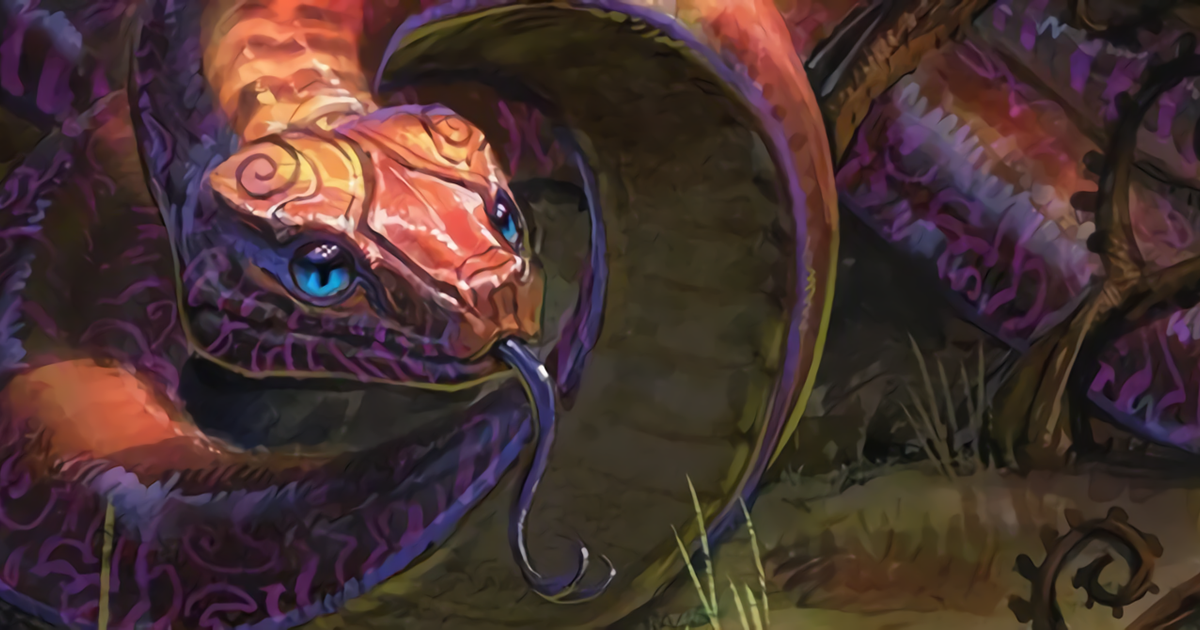
A coworker and I have been playing a bit of Standard in our free time, and my deck of choice is GB Constrictor. For those of you unfamiliar, the GB Constrictor deck aims to put counters on a bunch of creatures, and the card Winding ConstrictorWinding Constrictor makes overwhelming the opponent a possibility. What I discovered very quickly is just how good it feels to play a card like Verdurous GearhulkVerdurous Gearhulk, and make a monster out of nowhere. But if that monster also happens to be a Walking BallistaWalking Ballista, now I can turn my counters into straight damage. This made me realize that we can use our counters as a primary point of synergy, and sometimes like a currency. We can spread them around, and then put them on a creature that rewards us for having counters. Thinking of this, and the insane amount of counters Kresh can generate, I had to give him another shot.
If anything is dying, Kresh is growing, and he tends to grow really quickly. The fact that he grows with counters means that we have synergistic opportunities to increase his growths, turn his growth into removal, or pass his growth on once he dies. The missing piece that brought the deck into focus was the decision to focus all our attention on counters, and specifically "big" counters. And what creature type grows big with counters? Hydras. That's right, this is a hydras deck.
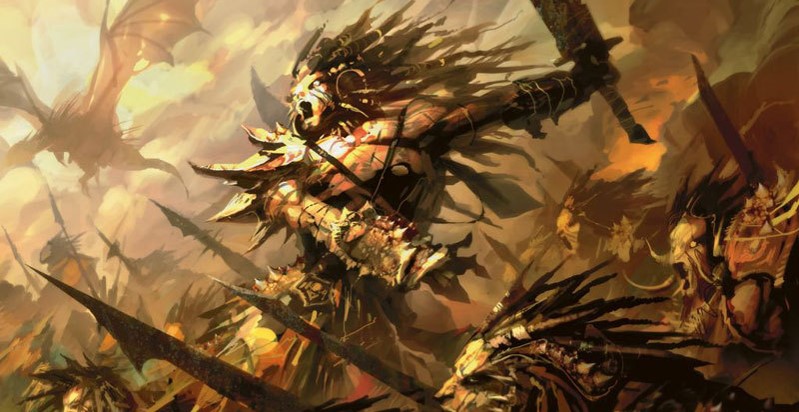
Deck Goal: Use counter synergies to generate value, and make big creatures to run over our opponents.
Alternate Goal: Fling massive creatures (HYDRAS) at our opponents until they die.
Hail Hydra!
View on ArchidektCreatures (42)
- 1 Hangarback WalkerHangarback Walker
- 1 Walking BallistaWalking Ballista
- 1 Carrion FeederCarrion Feeder
- 1 Apocalypse HydraApocalypse Hydra
- 1 Den ProtectorDen Protector
- 1 Gyre SageGyre Sage
- 1 Hooded HydraHooded Hydra
- 1 Primordial HydraPrimordial Hydra
- 1 Savageborn HydraSavageborn Hydra
- 1 Scavenging OozeScavenging Ooze
- 1 Vastwood HydraVastwood Hydra
- 1 Winding ConstrictorWinding Constrictor
- 1 Champion of LambholtChampion of Lambholt
- 1 FertilidFertilid
- 1 Managorger HydraManagorger Hydra
- 1 Reyhan, Last of the AbzanReyhan, Last of the Abzan
- 1 Rishkar, Peema RenegadeRishkar, Peema Renegade
- 1 Scourge of Skola ValeScourge of Skola Vale
- 1 Taurean MaulerTaurean Mauler
- 1 Thrashing BrontodonThrashing Brontodon
- 1 Tireless TrackerTireless Tracker
- 1 Tuskguard CaptainTuskguard Captain
- 1 Yahenni, Undying PartisanYahenni, Undying Partisan
- 1 Armorcraft JudgeArmorcraft Judge
- 1 Bloodspore ThrinaxBloodspore Thrinax
- 1 Corpsejack MenaceCorpsejack Menace
- 1 Crystalline CrawlerCrystalline Crawler
- 1 Exava, Rakdos Blood WitchExava, Rakdos Blood Witch
- 1 Forgotten AncientForgotten Ancient
- 1 Jarad, Golgari Lich LordJarad, Golgari Lich Lord
- 1 Polukranos, World EaterPolukranos, World Eater
- 1 Heroes' BaneHeroes' Bane
- 1 Kalonian HydraKalonian Hydra
- 1 MycolothMycoloth
- 1 Neheb, the EternalNeheb, the Eternal
- 1 Verdurous GearhulkVerdurous Gearhulk
- 1 Bane of ProgressBane of Progress
- 1 Hydra BroodmasterHydra Broodmaster
- 1 Hydra OmnivoreHydra Omnivore
- 1 Pathbreaker IbexPathbreaker Ibex
- 1 Ulvenwald HydraUlvenwald Hydra
- 1 VigorVigor
Artifacts (2)
- 1 Sol RingSol Ring
- 1 Ashnod's AltarAshnod's Altar
Enchantments (6)
- 1 Hardened ScalesHardened Scales
- 1 Retribution of the AncientsRetribution of the Ancients
- 1 Evolutionary LeapEvolutionary Leap
- 1 Death's PresenceDeath's Presence
- 1 Warstorm SurgeWarstorm Surge
- 1 Zendikar ResurgentZendikar Resurgent
Instants (4)
- 1 Solidarity of HeroesSolidarity of Heroes
- 1 Inspiring CallInspiring Call
- 1 Jund CharmJund Charm
- 1 Krosan GripKrosan Grip
Sorceries (45)
- 1 FarseekFarseek
- 1 CultivateCultivate
- 1 Chandra's IgnitionChandra's Ignition
- 1 Flesh // BloodFlesh // Blood
- 1 Hour of PromiseHour of Promise
- 1 Traverse the OutlandsTraverse the Outlands
- 1 Rishkar's ExpertiseRishkar's Expertise
- 1 Blasphemous ActBlasphemous Act
- 1 [Lands][Lands]
- 1 Blood CryptBlood Crypt
- 1 Cinder GladeCinder Glade
- 1 Command TowerCommand Tower
- 1 Dragonskull SummitDragonskull Summit
- 1 Fire-Lit ThicketFire-Lit Thicket
- 1 Foreboding RuinsForeboding Ruins
- 9 ForestForest
- 1 Game TrailGame Trail
- 1 Graven CairnsGraven Cairns
- 1 Karplusan ForestKarplusan Forest
- 1 Kessig Wolf RunKessig Wolf Run
- 1 Llanowar RebornLlanowar Reborn
- 1 Llanowar WastesLlanowar Wastes
- 3 MountainMountain
- 1 Oran-Rief, the VastwoodOran-Rief, the Vastwood
- 1 Overgrown TombOvergrown Tomb
- 1 Rogue's PassageRogue's Passage
- 1 Rootbound CragRootbound Crag
- 1 Savage LandsSavage Lands
- 1 Smoldering MarshSmoldering Marsh
- 1 Sulfurous SpringsSulfurous Springs
- 3 SwampSwamp
- 1 Twilight MireTwilight Mire
- 1 Woodland CemeteryWoodland Cemetery
A Counter Attack
At first glance, the biggest take-away from this deck is the high density of creatures. We have 42 creatures, and the reason for this is that our primary synergy in the deck is counters. We have creatures that grow big with counters, and we have other creatures that support creatures carrying counters. Because we have a focus on X spells, we have 10 pieces of ramp, many of which will find us multiple lands, or provide us more than 1 mana.

This deck also breaks significantly from my other designs in two areas:
First, we are rather removal light. We will cover our removal options in more detail later on, but at first glance we have 7 pieces of creature removal, and 3 pieces each of artifact and enchantment removal. This is primarily because I foresee this deck's counter engine being fairly sensitive, and without a high enough density of counter-related spells, I feel like the deck would become rather clunky. Testing might reveal that it's worth cutting down on our creature count in favor of more removal.
Second, in black decks that rely heavily on creatures, I really like to have a significant amount of recursion. This helps us hedge against control style decks that will be trying to wrath our board. Hydras don't play well with most of the better recursion options, although this deck may still appreciate a few cards like Phyrexian ReclamationPhyrexian Reclamation or Verdant ConfluenceVerdant Confluence. For this iteration, however, I'm hoping our density of threats will compensate for our more limited protection options.
Tangling with Hydras

The stars of this deck are the 14 hydras. Most of them will start small, so we will hopefully slip beneath the attention early removal. However, they have the potential to turn in to raging monsters, and left unchecked, they have the potential to run over our opponents. Hydras also scale well with the state of the game. In the mid or late game, we can begin pumping the bulk of our mana into our Hydras so that they can go toe to toe with even the biggest creatures on the board, and this effectively allows us to turn our mana into counters for Kresh if we decide to sacrifice our Hydras. Let's take a look at some of our options.

Apocalypse HydraApocalypse Hydra, Hooded HydraHooded Hydra, and Vastwood HydraVastwood Hydra fall into the category of "counters as currency". Apocalypse allows us to pick off our opponents' creatures, or else turn our counters into a form of burn to close out a game. Hooded has native wrath insurance, creating an army after its death. Hooded works particularly nicely with Kresh, because we can sacrifice the snakes it makes to effectively double the number of counters it puts on our commander. Vastwood operates similarly to Hooded, ensuring that the mana we pump into it isn't lost to removal. Also, the ability to distribute counters among any number of creatures shouldn't be underestimated given the counter doublers in the deck.
Primordial HydraPrimordial Hydra, Managorger HydraManagorger Hydra, and Taurean MaulerTaurean Mauler are included specifically to grow as big as possible. We have a variety of effects in this deck like Rishkar's ExpertiseRishkar's Expertise and Traverse the OutlandsTraverse the Outlands that reward us for having massive beaters, and these hydras should help accomplish the task. In combination with Retribution of the AncientsRetribution of the Ancients, these three will provide us a steady means of keeping opposing creatures off the board. Savageborn HydraSavageborn Hydra and Heroes' BaneHeroes' Bane could also fit into this category, but they requires a bit more work on our end. However, both should prove to be a good mana sinks later in games.

Polukranos, World EaterPolukranos, World Eater and Hydra BroodmasterHydra Broodmaster are two potent mana sinks. Polukranos will help us to clear the board of stuff that might get in our way, while Broodmaster will let us introduce a ton of additional power to the board. Both have nicely sized starting bodies, so even if we don't have the opportunity to make them Monstrous, we can still sacrifice them to grow Kresh.
Scourge of Skola ValeScourge of Skola Vale is perfect for a deck like this. It requires a small initial investment, has evasion, and acts as a sacrifice outlet. Scourge can eat our other hydras to grow itself and Kresh all at once. This is another form of removal insurance. If one of our other hydras is becoming too big a threat, our opponents will need removal for Scourge too if they want to keep the power off the board.
Kalonian HydraKalonian Hydra is a staple in counter-based decks, and is the perfect addition for this one. It has natural evasion, and doubles the counters on each of our creatures whenever it attacks. If this one survives, our army will be overwhelming after a couple combat phases.
The last two hydras don't rely on the counter theme. Ulvenwald HydraUlvenwald Hydra should be gigantic by the time we're able to play it, and we have a handful of potent land options that are worth tutoring. In particular, Rogue's PassageRogue's Passage and Kessig Wolf RunKessig Wolf Run will ensure that our Hydras have an easy time making contact, while Oran-Rief, the VastwoodOran-Rief, the Vastwood can help us net a lot of additional counters with limited investment. Hydra OmnivoreHydra Omnivore is one of our best targets to move counters to. Omnivore starts as an 8/8, so it should be dealing tons of damage on its own, but if we can grow it even a little bit, we can start taking out our opponents all at once.
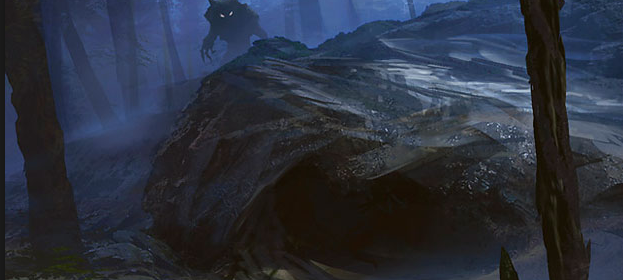
The hydras are some of our best bodies, and some of our best options as game-enders, but we still have a lot cards that play with counters. Most of these can be viewed as a supporting cast to enable our hydras and Kresh, but given that counters can turn even the smallest body into a monster, all of our creatures can be viewed as potential threats.
The Counter Holders
This deck has a handful of cards that offer us abilities just for having counters, and some of these abilities are potent enough to take over a game.

Hangarback WalkerHangarback Walker and Walking BallistaWalking Ballista are Hydra-esque in the sense that we can pump them up with as much mana as we can afford. Of course, the XX costs make this more challenging, but both have abilities that allow us to sink mana into them later on to grow them bigger. Walker is another iteration of the Hooded HydraHooded Hydra effect, where each counter represents removal insurance, additional bodies for us to put counters on, and more potential power for Kresh. Ballista is more similar to Apocalypse HydraApocalypse Hydra allowing us to gun down creatures in our way, or else turn a bunch of counters into a kill shot.
Gyre SageGyre Sage falls into the category of ramp spells for this deck, but it's worth mentioning here. The more counters we can put on it, the more mana we make to put towards our X spells. Crystalline CrawlerCrystalline Crawler offers us a similar effect to Sage, with the upside of being able to generate more counters on its own. Most times, by turn 4, we should be able to cast Crawler with Converge= 3, so Crawler can act as an explosive form of ramp on turn 5. FertilidFertilid isn't as explosive as Sage or Crawler, but it will allow us to turn each counter into a Rampant GrowthRampant Growth.
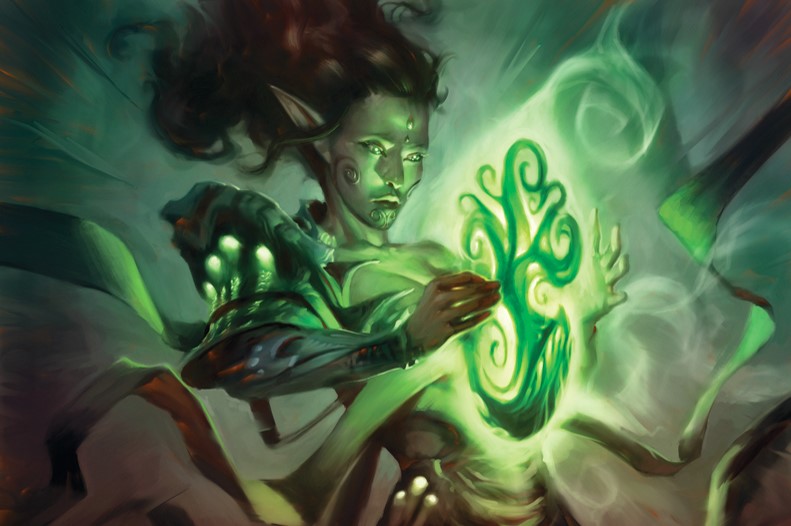
A few of our creatures will make our team more potent in combat for each of their counters. Champion of LambholtChampion of Lambholt will grow on its own for each creature we play, but the more counters we put on it, the more likely we are to have our team attack through unmolested. Champion is one of the cards that benefits mightily from our high creature count. Tuskguard CaptainTuskguard Captain is included for a similar reason as Champion. It doesn't need to carry a counter of its own, but it will grant all of our other creatures with counters evasion. Bloodspore ThrinaxBloodspore Thrinax will help us to propagate our counters, turning each new creature into a real threat. The fact that it can function as a conditional sac-outlet can also be useful if we have Kresh on board. Finally, Exava, Rakdos Blood WitchExava, Rakdos Blood Witch grants our team haste, letting us surprise our opponents with an alpha strike.

The last card I want to look at is MycolothMycoloth. Like Thrinax, Mycoloth's devour ability gives us a potential sac-outlet, and it should be noted that devour 2 means that Mycoloth can enter the battlefield as a gigantic beast. Mycoloth has the potential to make an entire army on its own, making it one of the best targets for our counters. However, I can speak from personal experience that most opponents will not let Mycoloth stick around, so be conscientious of the board state to give it the best chance to survive.
Incremental Growth
Now that we know our potential counter targets, we need to be able to put counters on our team. Most of our dudes will come into play with counters on their own, or else generate counters passively, but it can't hurt to have additional ways to increase our counter count.

The most obvious way to increase our counter output is with cards that grant us additional counters each time we have an ability that distributes counters. Perhaps the most well known variant of this kind of spell is Hardened ScalesHardened Scales. Scales is an incredible early game play for us, requiring very little investment, being difficult to remove, and increasing the output of each future counter related spell. Winding ConstrictorWinding Constrictor offers a similar ability in this deck, trading resilience for the ability to carry counters itself. Solidarity of HeroesSolidarity of Heroes will allow us to double up on counters at instant speed, which could make our attack lethal under the right conditions. Finally, Corpsejack MenaceCorpsejack Menace is one of the best cards in the deck when paired with Hydras, or Kresh, or any other spell that grants more than one counter at a time. While Scales and Constrictor give us incremental value with each counter placed, Menace will double our output for all counters, effectively putting 2x multiplier on each X of our Hydras. If we can get Menace to stick, we should have a good chance of running away with the game.

Outside of increasing our counter output, cards like Forgotten AncientForgotten Ancient and Verdurous GearhulkVerdurous Gearhulk give us the opportunity to move a bunch of counters around. Like Taurean MaulerTaurean Mauler and Managorger HydraManagorger Hydra, Ancient should grow significantly on its own, and can then pass its counters to whatever target needs them the most. Gearhulk has the wonderful ability to distribute its counters, and in combination with Scales or Constrictor, it can bring 12 power to the board.
VigorVigor makes our creatures near impossible to kill in combat, and facilitates disgusting combos with Scales or Constrictor, and one of our pingers like Walking BallistaWalking Ballista or Polukranos, World EaterPolukranos, World Eater. It's also worth noting that our burn based removal like Chandra's IgnitionChandra's Ignition will allow us to add an obscene amount of counters to each of our creatures while Vigor is on board.
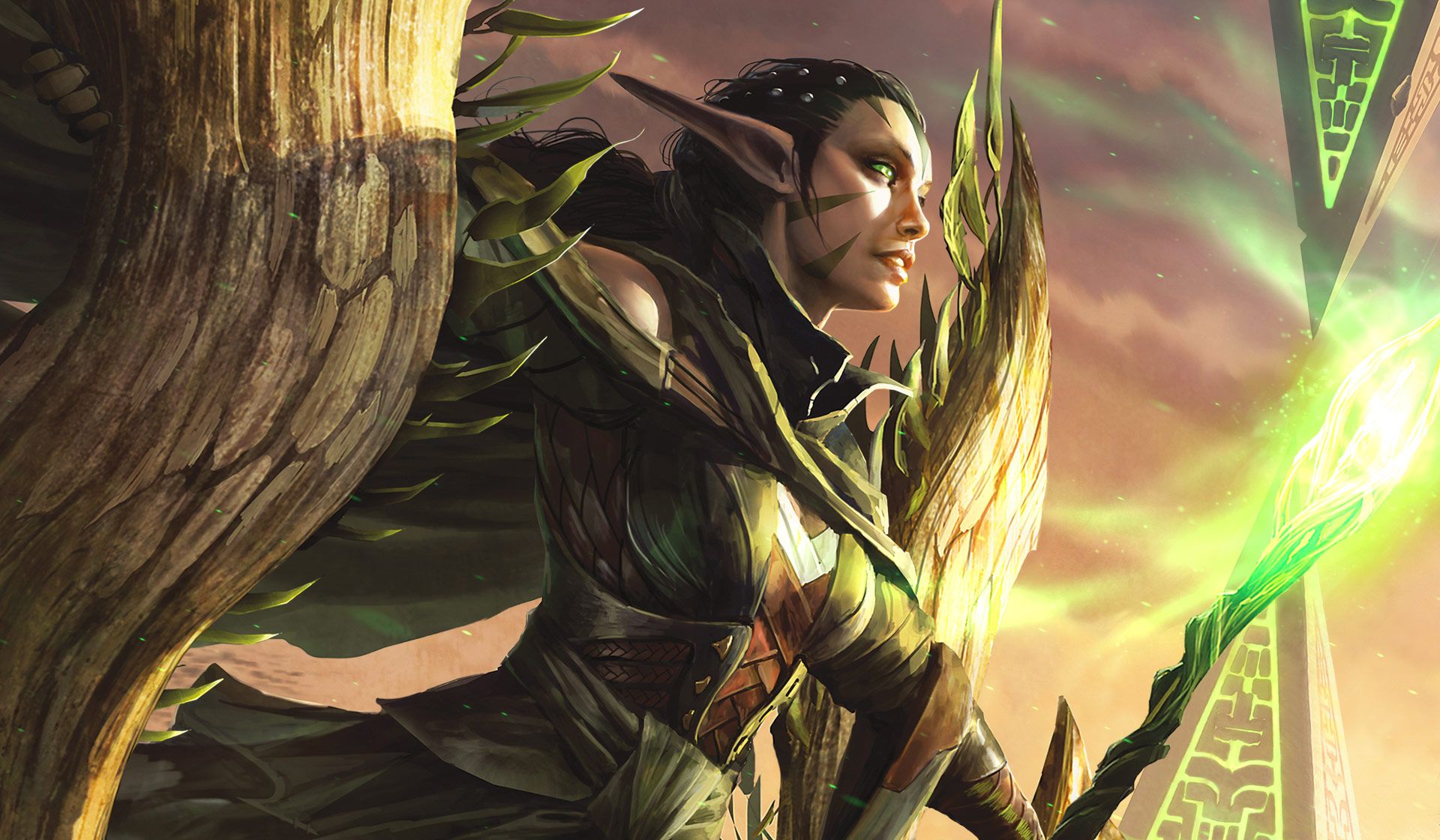
Beyond these, Jund CharmJund Charm, Nissa, Voice of ZendikarNissa, Voice of Zendikar, and Rishkar, Peema RenegadeRishkar, Peema Renegade each provide us ways of placing counters on our team, and each come with small upsides that could make them valuable under the right conditions.
Finally, a subsection of these spells let us move counters around. Reyhan, Last of the AbzanReyhan, Last of the Abzan and Death's PresenceDeath's Presence both let us pass around our counters when a creature dies. Presence will convert the power of any of our creatures into counters, allowing us to get more value of our dudes that start with bigger bodies. Both of these will let us "blank" spot removal while we have a sac-outlet on board, giving us a form of pseudo-protection.
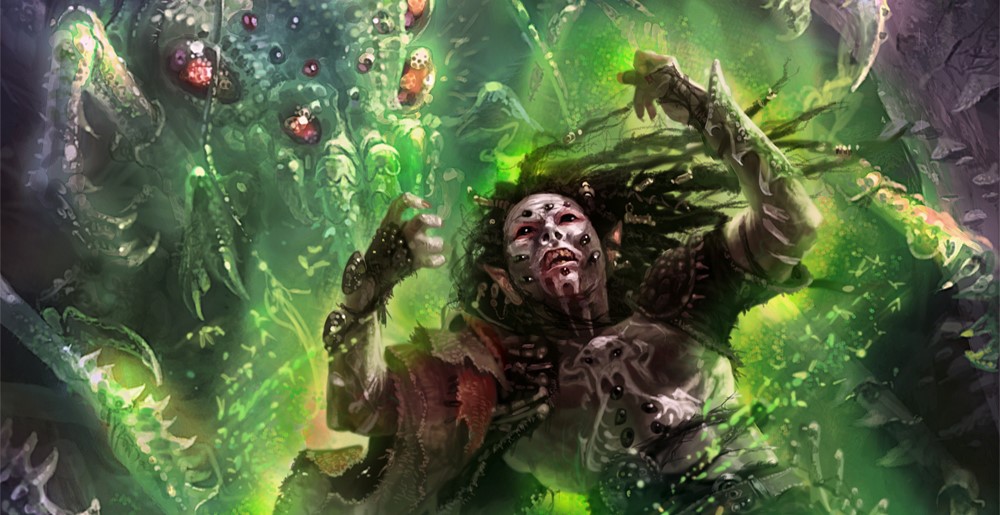
Savage Victory
Once we've built up a few guys, and granted them evasion, we should be in pretty decent shape to run our opponents over. In most cases this will be how we end the game.
Given that our focus on Hydras and Kresh will usually allow us to have a giant creature on board, Pathbreaker IbexPathbreaker Ibex will often be more than enough of a push to wipe out our opponents.
But what if the board is too gummed up with creatures for us to get a combat kill?

Flesh // BloodFlesh // Blood, Chandra's IgnitionChandra's Ignition, and Jarad, Golgari Lich LordJarad, Golgari Lich Lord will let us turn Kresh into a sweet, sweet lava storm to roast our opponents.
And if that isn't enough, Warstorm SurgeWarstorm Surge will turn each Hydra into a fireball. That's right, we're slinging multi-headed fireballs of doom.
The Glue
Ramp, Removal, Sac-Outlets, and Card Draw
View on ArchidektRamp (10)
- 1 Sol RingSol Ring
- 1 FarseekFarseek
- 1 Gyre SageGyre Sage
- 1 CultivateCultivate
- 1 FertilidFertilid
- 1 Crystalline CrawlerCrystalline Crawler
- 1 Hour of PromiseHour of Promise
- 1 Neheb, the EternalNeheb, the Eternal
- 1 Traverse the OutlandsTraverse the Outlands
- 1 Zendikar ResurgentZendikar Resurgent
Creature Removal (11)
- 1 Walking BallistaWalking Ballista
- 1 Retribution of the AncientsRetribution of the Ancients
- 1 Apocalypse HydraApocalypse Hydra
- 1 Jund CharmJund Charm
- 1 Polukranos, World EaterPolukranos, World Eater
- 1 Chandra's IgnitionChandra's Ignition
- 1 Blasphemous ActBlasphemous Act
- 1 [Artifact & Enchantment Removal][Artifact & Enchantment Removal]
- 1 Krosan GripKrosan Grip
- 1 Thrashing BrontodonThrashing Brontodon
- 1 Bane of ProgressBane of Progress
Sac-Outlets (8)
- 1 Carrion FeederCarrion Feeder
- 1 Evolutionary LeapEvolutionary Leap
- 1 Ashnod's AltarAshnod's Altar
- 1 Scourge of Skola ValeScourge of Skola Vale
- 1 Yahenni, Undying PartisanYahenni, Undying Partisan
- 1 Bloodspore ThrinaxBloodspore Thrinax
- 1 Jarad, Golgari Lich LordJarad, Golgari Lich Lord
- 1 MycolothMycoloth
Draw (4)
- 1 Inspiring CallInspiring Call
- 1 Tireless TrackerTireless Tracker
- 1 Armorcraft JudgeArmorcraft Judge
- 1 Rishkar's ExpertiseRishkar's Expertise
Now that we've delved, at length, into the engine that makes this deck tick, we need to briefly talk about the pieces that hold it together. Most of these cards double as cards that facilitate our counters strategy, so I will try to focus on the ones we haven't already addressed.
Smoldering Growth & Returning to Dust
Our ramp package is rather straight forward, with a few usual suspects like FarseekFarseek and CultivateCultivate. However, I've tried to skew our mid and late game ramp to go really big so that we can start making the biggest hydras possible.
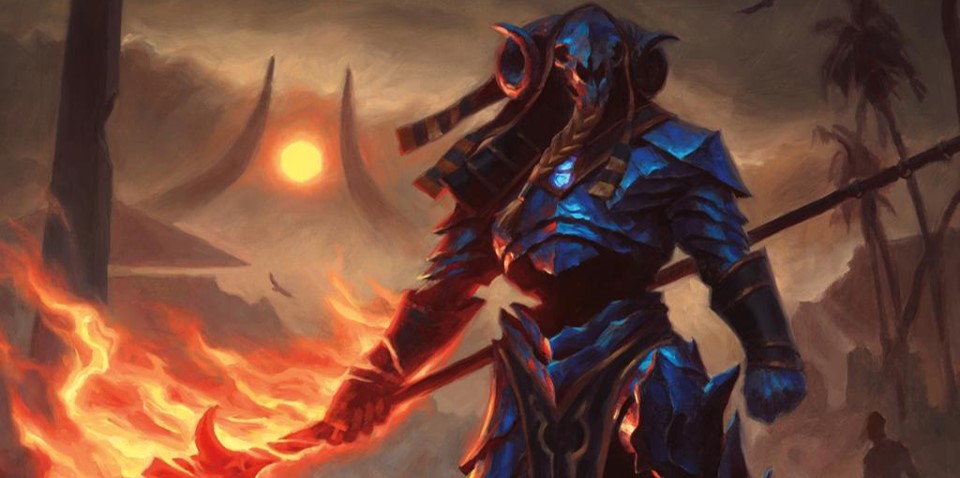
Traverse the OutlandsTraverse the Outlands should always be grabbing us a bunch of lands, considering that our focus on Hydras, and access to Kresh. Neheb, the EternalNeheb, the Eternal can make use of our aggressive strategy to create a bunch of mana specifically intended to be paid into X spells. And finally, Zendikar ResurgentZendikar Resurgent rewards us for our intense devotion to creatures, and doubling our mana output, by extension, doubles the size of our Hydras.
Our removal package is skewed more towards eliminating creatures than other permanents. Of particular note, we should always have tons of counters for Retribution of the AncientsRetribution of the Ancients, which should allow us to effectively police the board. Blasphemous ActBlasphemous Act is our "last resort" option, but it should help us clear out boards of tokens that might be in our way. More importantly, it shouldn't be uncommon for Kresh to survive a Blasphemous ActBlasphemous Act, and watching all the other creatures burn should provide him a ton of counters, and a window to kill off an opponent.

Krosan GripKrosan Grip is included to stop artifact based combos, while Thrashing BrontodonThrashing Brontodon is included because it self sacrifices to give Kresh 3 counters. Bane of ProgressBane of Progress rewards us for building our deck with only ~10% artifacts and enchantments, and it will get to make use of all of the token synergies we've built into the deck, while also becoming a huge beater in most games.
We've talked about most of our sac-outlets already, although two are worth noting. Ashnod's AltarAshnod's Altar is good in most decks, but particularly so here since we can invest the 2 colorless mana it makes into X spells. Evolutionary LeapEvolutionary Leap is a form of protection for this deck, letting us turn any grave-bound creatures into creatures in hand.
Finally, the heavy counter focus in this deck provides us with some potent draw spells. Inspiring CallInspiring Call will protect our board from wraths while rewarding us for our density of creatures with counters. Armorcraft JudgeArmorcraft Judge functions similarly to Call, while providing us a body to work with. Finally, Rishkar's ExpertiseRishkar's Expertise is this deck's "big" draw spell, and under most conditions should completely reload our hand.
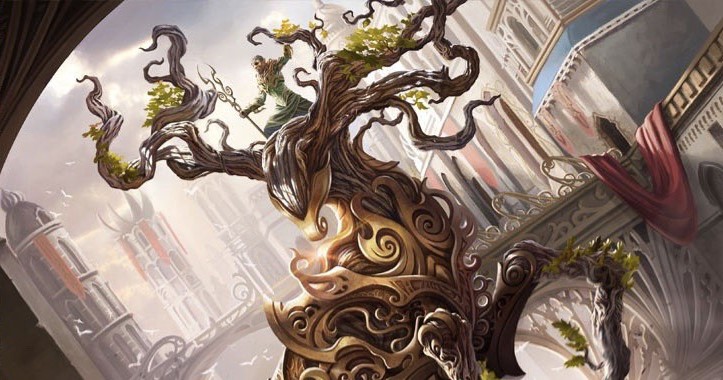
A Look Back and a Look Forward
Thank you all for taking the time to read about my Kresh deck. I just recently put this together in real life, and I couldn't be more excited to give it a shot! Kresh and Hydras should be best friends, and I can't think of a more "Jund" combination.
I also wanted to thank you all for the awesome feedback on my Trostani article previously, and I hope you all will give me equally awesome feedback/suggestions this week!
Last time, I saw a lot of good discussion going on, and a bunch of good ideas to get the brewing juices flowing. In particular, I want to acknowledge a card that I overlooked, but definitely should have been in the Trostani deck: Helm of the HostHelm of the Host. As many of you pointed out, Helm lets us Populate all kinds of crazy creatures we shouldn't normally have multiples of, and despite it's high cost, I think it's worth heavy consideration for the Trostani deck.

Since I missed Helm in Trostani, I've been brainstorming all week about where else Helm would be awesome, and I believe I've come up with the perfect deck to abuse it to the fullest. Tune in next time to see how we can double some creatures, and double some damage to smash through our competition!
Until then, I wish you all the best, and happy brewing!
Scot Sutton
I'm a Timmy that loves Green, Creatures, and Lands. I prefer controlled smashing, and best associate with the Temur colors. I've been playing commander since 2012, and I spend my free time brewing decks and exploring new strategies. I'm also a sports nut, and follow baseball, football, hockey, and soccer in detail.
Your opinions are welcome. We love hearing what you think about Magic! We ask that you are always respectful when commenting. Please keep in mind how your comments could be interpreted by others. Personal attacks on our writers or other commenters will not be tolerated. Your comments may be removed if your language could be interpreted as aggressive or disrespectful. You may also be banned from writing further comments.
